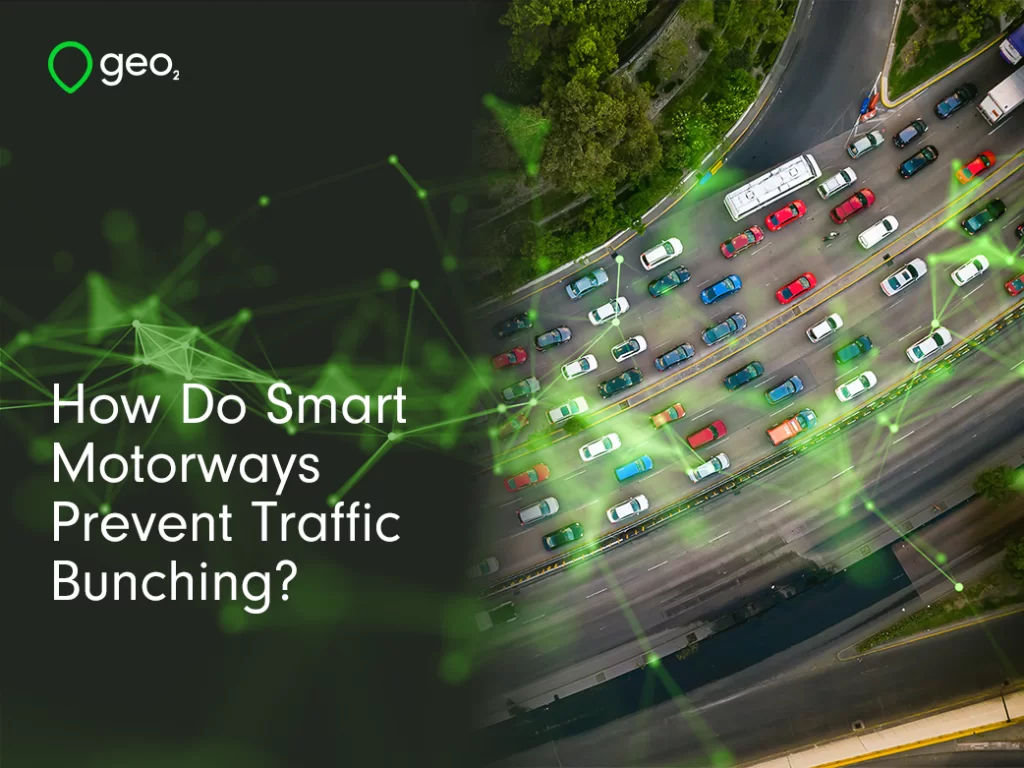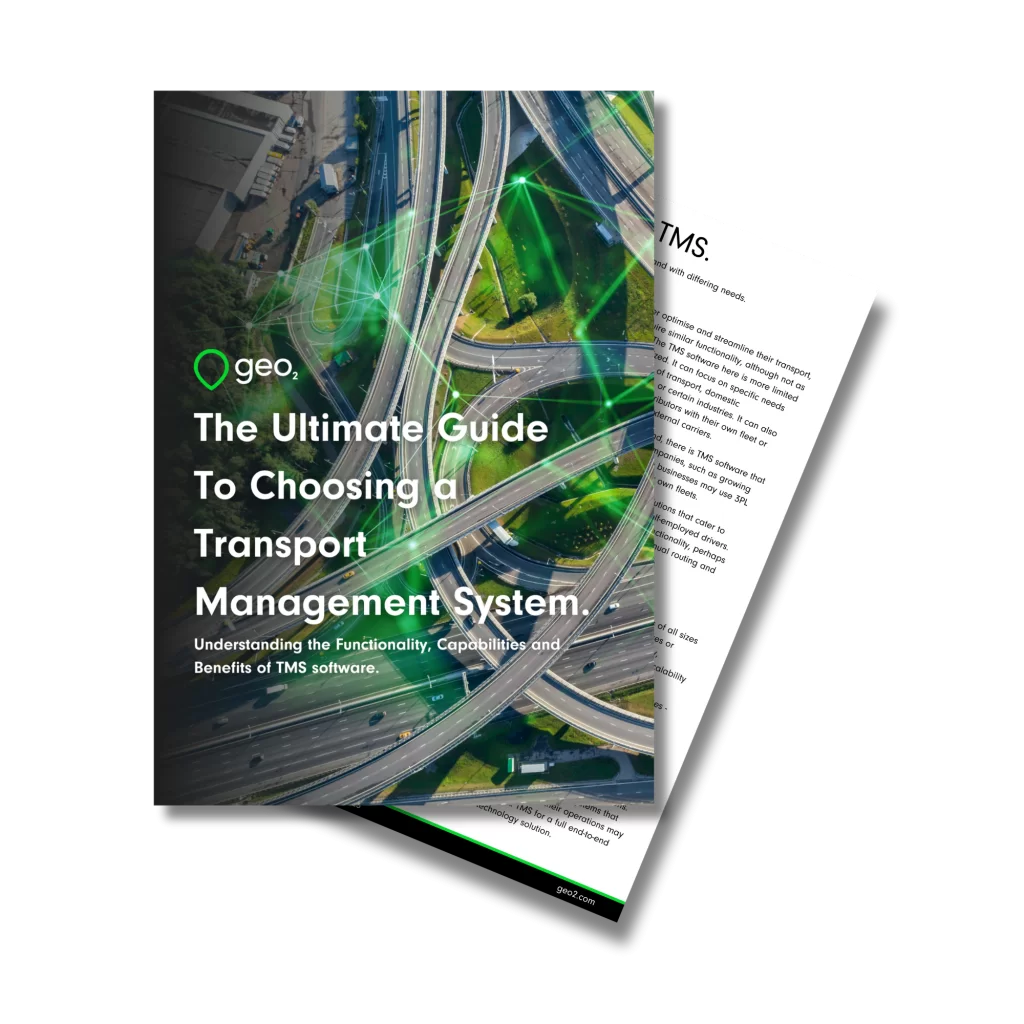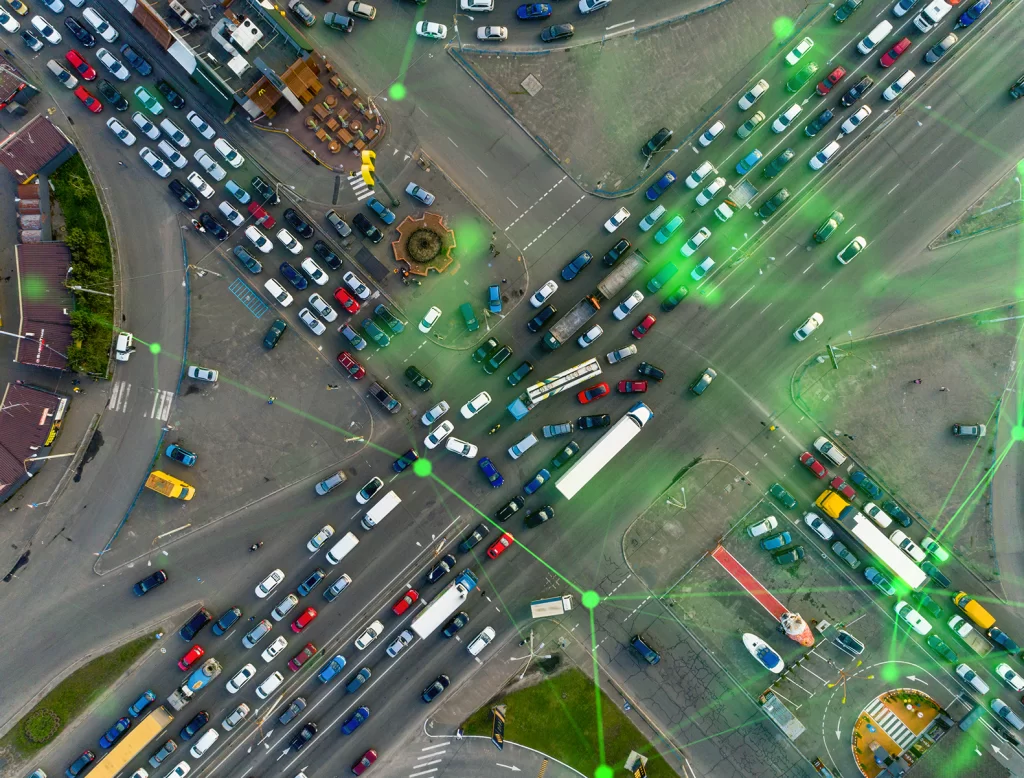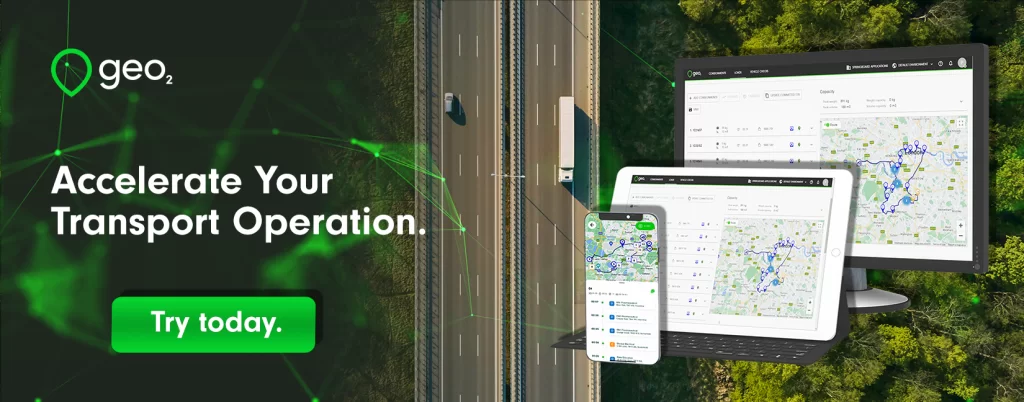
How Do Smart Motorways Prevent Traffic Bunching?
Introduction.
Road traffic is increasing year on year. For distributors and logistics companies, navigating congestion so that deliveries make it on time has become a critical challenge.
Busy motorways present a particular problem, with long stretches often snarled up, preventing delivery drivers from getting packages across the country as quickly as they would like.
Smart motorways were introduced as a solution to keeping the traffic flowing smoothly by helping to prevent traffic bunching.
These advanced road networks employ a combination of technology and traffic management techniques to adapt to changing conditions, offering a more dynamic solution to the problem of motorway congestion.
Need help choosing a TMS?
Download the Free Guide Now.

Table of Contents.
What is a Smart Motorway?
Smart motorways were introduced as a way of accommodating additional traffic and regulating its flow without having to widen stretches of road.
The first major trials were undertaken in 2006, on the M42, by opening up the hard shoulder to regular traffic at peak times. Deemed successful in increasing the capacity of our roads, the use of smart motorways has gradually increased since then.
Smart motorways combine a number of elements, some of which are permanent, while others are only used temporarily.
In some cases, the traditional hard shoulder is opened up to regular traffic, effectively adding another lane to the motorway. Where this is the case, there are periodic emergency stopping areas, where vehicles can take refuge while awaiting recovery.
On other smart motorways, the hard shoulder runs dynamically, opening temporarily while traffic is at a peak. In these instances, gantry signage above the lane designates when the lane is closed with a red X.
A controlled motorway is a type of smart motorway that operates variable speed limits, again controlled by gantry signage. Systems actively monitor the flow of traffic and adjust the speed limit temporarily to mitigate upcoming traffic congestion and to alleviate traffic bunching.
The revised speed limits are prominently displayed on the overhead gantries and are typically enforced by speed cameras or average speed cameras along some stretches.
In addition to managing congestion and traffic bunching, speed limits are also used to regulate traffic through roadworks or to slow traffic ahead of a known accident or vehicle breakdown.

Table of Contents.
Understanding Traffic Bunching.
Traffic bunching is the phenomenon where vehicles on a motorway slow down or come to a halt, leading to a ripple effect that causes congestion. It is also sometimes referred to as traffic waves, as the traffic speeds and slows in wave-like patterns. Traffic bunching typically occurs when the density of vehicles exceeds the road’s capacity to handle them efficiently.
One of the most common causes of traffic bunching is the sudden braking of a vehicle. When a driver brakes suddenly, the vehicle behind also slows down. This initiates a chain reaction that eventually leads to a standstill. Other contributing factors include vehicles changing lanes, roadworks, accidents and even driver behaviour, such as not maintaining a consistent speed or driving too close to the vehicle in front.
For delivery drivers, traffic bunching poses significant challenges. It not only delays their schedules, impacting delivery times, but also increases fuel consumption and vehicle wear and tear due to stop-and-go driving conditions. This inefficiency can increase operating costs and disrupt the overall logistics chain, affecting the reliability of delivery services.

How do Smart Motorways Stop Traffic Bunching?
Understanding the mechanics behind traffic bunching is crucial in devising strategies to mitigate its impact, particularly in the context of smart motorway systems designed to keep traffic flowing more smoothly.
Smart motorways alleviate traffic bottlenecks by limiting traffic speed ahead of an issue. By moderating the flow of traffic, they smooth out the traffic further back along the motorway, which prevents sudden braking and the subsequent formation of traffic waves.
This is achieved through four main features:
- Variable speed limits. Speed limits are dynamically adjusted based on real-time traffic conditions. By introducing lower speed limits in response to increasing traffic density or an incident, smart motorways pre-emptively reduce the risk of traffic bunching.
- Lane usage management. On smart motorways, all the lanes, including the hard shoulder, can be opened or closed in response to traffic volume. Overhead signage directs traffic away from incidents or congested lanes, more evenly distributing vehicles across available lanes.
- Traffic monitoring technology. Advanced sensors and cameras constantly monitor traffic flow. This data is used to inform decisions about speed limits and lane closures, ensuring that adjustments are timely and effective in preventing congestion.
- Electronic signage. Speed limits, lane closures and warnings about incidents ahead are displayed on motorway signs. These are real-time updates that guide drivers, compelling them to slow down or change lanes accordingly, helping to maintain a steady flow of traffic.
On smart motorways, these features help address the root causes of traffic bunching, providing a proactive approach to traffic management that adapts to changing conditions. Consistent vehicle speeds are maintained, which reduces the stop-and-go patterns that lead to bottlenecks. This improves overall traffic flow and helps all drivers keep to their schedules.

Challenges and Criticism of Smart Motorways.
Smart motorways have been shown to improve journey reliability and to reduce collisions between moving vehicles.
However, on smart motorways where the hard shoulder is absent or not in use, there has been a rise in collisions, particularly incidents involving one or more stationary vehicles. This trend put smart motorways under greater scrutiny and saw them attract a great deal of criticism. Concerns were amplified following a surge in incidents that included several near misses and fatalities.
Reflecting the growing apprehensions about the safety and effectiveness of these roads, along with financial pressures, the government announced in April 2023 that no new smart motorways would be constructed.
This announcement has opened up a wider dialogue on the future of smart motorways and the need for alternative solutions to manage traffic congestion while ensuring the safety of all road users.
Geo2 is designed to help you navigate the motorway network with ease. Whether it’s adapting to variable speed limits on smart motorways, finding alternative routes to avoid traffic bunching, or simply optimising your delivery schedules, Geo2 prevents traffic bottlenecks from slowing down your business. Sign up for a free trial of Geo2 today and take the first step towards smarter, more efficient deliveries.






